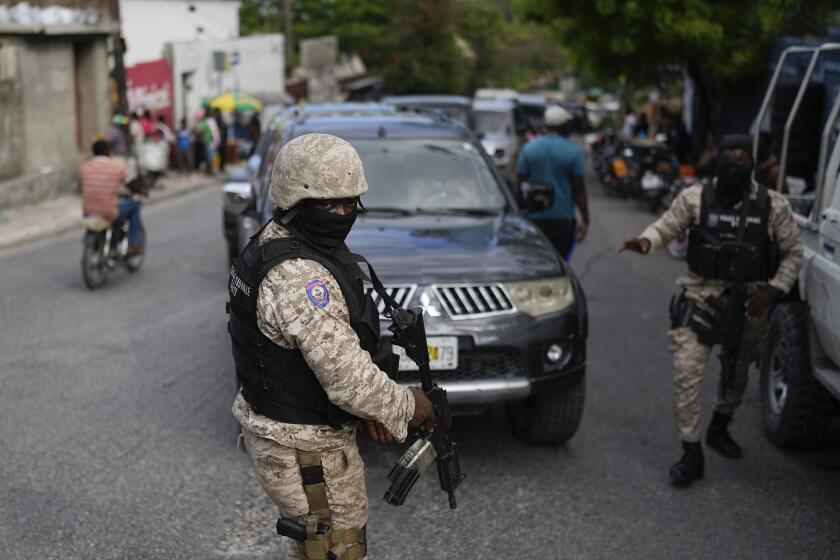Lonely Easter Island Will Be Emergency Shuttle Landing Site
When the space shuttle blasts off from California early next year, it will have the world’s loneliest inhabited island as an emergency landing site if anything goes wrong on takeoff.
The military government has approved U.S. National Aeronautics and Space Administration plans to extend the runway on Easter Island, a tiny volcanic island in the South Pacific, and President Augusto Pinochet is expected to give his approval soon.
Military officials say the plan will bring Chile closer to the United States. But the project has come under fire from Chileans who fear it will damage the island’s unique archeological heritage.
Open-Air Museum
Critics claim the United States will turn the remote island into a strategically placed military base that could drag Chile into the forefront of superpower conflicts and make the country a sitting duck in a nuclear war.
Easter Island, Chile’s only Polynesian possession, located about 2,000 miles off the South American coast, is one of the world’s most fantastic open-air museums.
Massive stone heads carved out of volcanic stone by unknown sculptors many centuries ago dot the barely inhabited island. The mysterious 30-foot figures with long faces stand all around the windswept island, looking out to sea.
“The NASA plan is absurd. It’s like building a dance floor in the Natural History Museum,” said Chilean historian Oscar Pinochet de la Barra, one of the critics of the space shuttle landing project.
Opposition leaders, complaining that the country has not been fully informed about a project, which, they claim, will damage national sovereignty, have demanded a referendum to put the issue to the country.
The United States plans to start launching space shuttles from Vandenberg Air Force Base in March. Shuttles flying from Vandenberg will be able to fly in orbits that cross the poles. Shuttles launched from Cape Canaveral can only go into equatorial orbits.
Polar orbits are required for weather and Earth resources satellites and for certain kinds of military reconnaissance spacecraft because a satellite flying over the poles overflies the entire globe periodically.
The Vandenberg launches, planned at four a year, require an emergency landing site in the South Pacific in case of an engine failure, and Easter Island is ideally positioned.
U.S. Embassy officials in Santiago said the NASA project involves lengthening the runway at Mataveri, the island’s airport, by 1,420 feet to the 11,055 feet required for a shuttle landing and its eventual piggy-back retrieval by a Boeing 747.
In addition, the latest microwave landing aid system must be installed, plus strong xenon landing lights, effectively upgrading the airport’s facilities and increasing its security.
The nearest alternative airport is located 1,000 miles away in Tahiti, officials said.
NASA will foot the bill and has budgeted $11 million for the island project. The funds have already been requested from Congress.
At no cost to Chile, embassy officials say, Easter Island will be decked out with the best equipment that any modern airport in the world has. The airstrip extension will allow the biggest wide-bodied planes to land there, thus boosting the tourist trade, they add.
The embassy’s science attache, Joel Cassman, dismissed charges of possible ecological damage and said earth movements will not extend beyond the airport’s present perimeter. None of the mysterious stone figures will be affected.
“It might never be used. There hasn’t been a single emergency abort yet in the 18 space shuttle missions to date,” Cassman said. “But the program requires having a landing site that can be used at a pinch.”
For shuttle launches over the Atlantic from Florida’s Kennedy Space Center, NASA has permission to use Dakar International Airport in Senegal as an emergency landing site.
More to Read
Start your day right
Sign up for Essential California for news, features and recommendations from the L.A. Times and beyond in your inbox six days a week.
You may occasionally receive promotional content from the Los Angeles Times.






